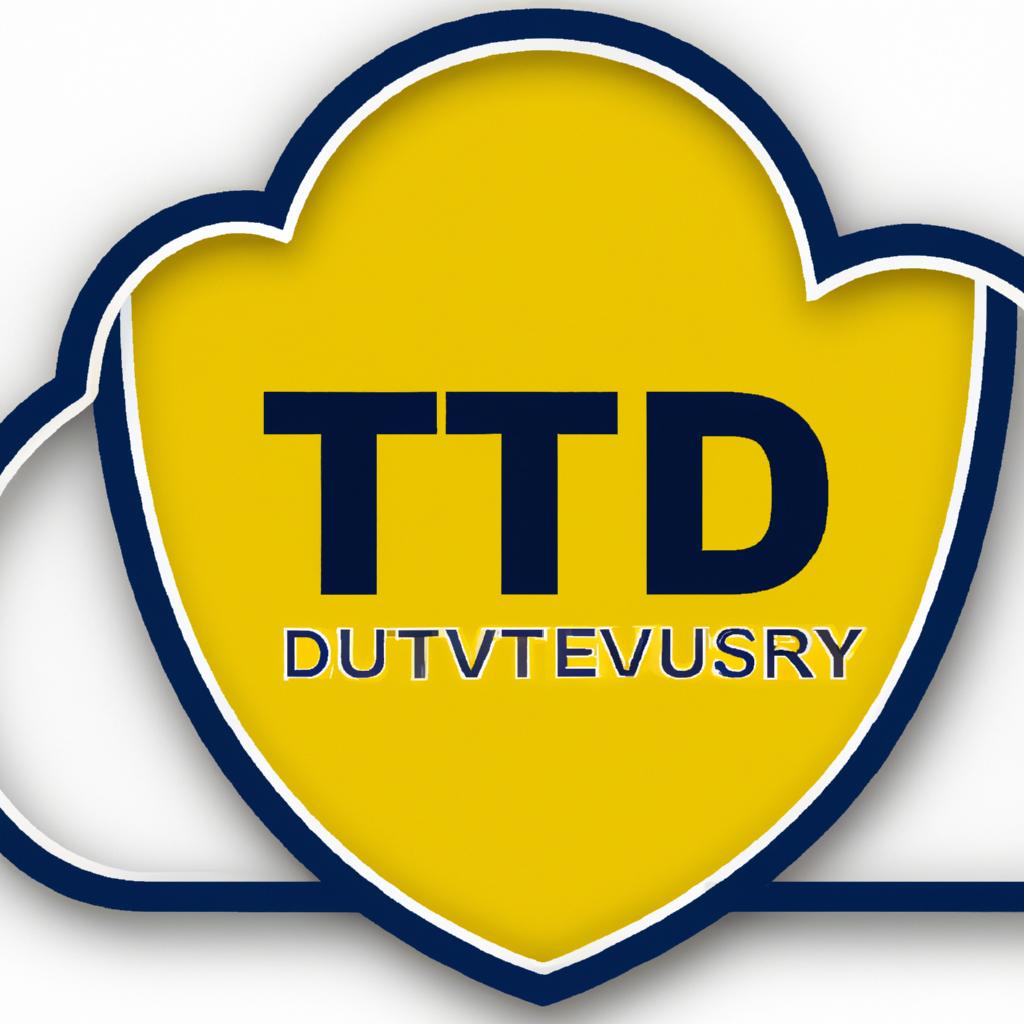In today’s fast-paced digital landscape, the security of cloud-based systems has become increasingly critical. Enter zero trust cloud security, a revolutionary approach that challenges traditional security models. In this article, I will explore the concept of zero trust cloud security, its application to cloud environments, and the growing need for robust security measures in the cloud.
What is Zero Trust Cloud Security?
Zero trust cloud security is a paradigm shift in the way we perceive and implement security measures. Unlike traditional security models that rely on perimeter-based defenses, zero trust adopts a proactive approach by assuming that no user or device within or outside the network can be trusted by default. Every request, user, or device must be verified and authenticated before being granted access to sensitive resources.
The Application of Zero Trust to Cloud Security
With the rapid adoption of cloud computing, organizations face an increasing number of threats to their sensitive data and applications. Zero trust principles can be effectively applied to cloud security to mitigate these risks. By implementing granular access controls, continuous monitoring, and real-time threat detection, zero trust cloud security ensures that only authorized users and devices can access critical resources, regardless of their location.
The Growing Need for Robust Cloud Security Measures
As businesses embrace digital transformation and migrate their operations to the cloud, the need for robust cloud security measures has never been more evident. Cybercriminals are constantly devising sophisticated attack techniques, aiming to exploit vulnerabilities in cloud environments. Without proper security measures in place, organizations risk data breaches, intellectual property theft, and financial losses.
In conclusion, zero trust cloud security is an innovative approach to safeguarding sensitive data and resources in the cloud. By revamping traditional security models and enforcing strict access controls, organizations can fortify their cloud environments against emerging threats. In the following sections, we will delve deeper into the key components, best practices, challenges, and the future of zero trust cloud security. Stay tuned for valuable insights and practical tips on implementing this cutting-edge security approach to protect your digital assets.
Stay tuned for Section 2, where we will explore the key components of zero trust cloud security, including identification and authentication, authorization and access control, network segmentation, monitoring and analytics, and security automation and orchestration.
Understanding Zero Trust Cloud Security

The Concept of Zero Trust and Its Principles
Zero trust is a security framework that challenges the traditional approach of assuming trust within a network. It is based on the principle that no user or device should be inherently trusted, regardless of their location or network environment. Every user, request, or device must be authenticated and verified before gaining access to sensitive resources.
In a zero trust model, trust is not granted based on network location or IP address. Instead, it is earned through continuous verification and monitoring of user behavior, device health, and other contextual factors. By adopting this approach, organizations can enhance their security posture and minimize the risk of unauthorized access and data breaches.
Applying Zero Trust to Cloud Security
Cloud environments present unique challenges when it comes to security. With multiple users, devices, and applications accessing resources from various locations, the traditional perimeter-based security approach falls short. Zero trust cloud security provides a solution by implementing granular access controls and robust authentication mechanisms.
By leveraging zero trust principles in the cloud, organizations can mitigate risks and protect their sensitive data. User authentication is strengthened through multi-factor authentication (MFA) and strong encryption, ensuring only authorized individuals can access resources. Additionally, access controls are based on the principle of least privilege, granting users the minimum level of access required to perform their tasks.
Benefits of Implementing Zero Trust Cloud Security
Implementing zero trust cloud security offers several benefits to organizations. Firstly, it reduces the attack surface by enforcing strict access controls and continuously monitoring user behavior. This helps detect and prevent unauthorized access attempts in real-time.
Furthermore, zero trust cloud security enhances data protection by encrypting sensitive information and ensuring it remains secure both in transit and at rest. This minimizes the risk of data breaches and helps organizations comply with data protection regulations.
Lastly, the adoption of zero trust cloud security improves overall risk management and compliance. By implementing robust security measures, organizations can demonstrate their commitment to protecting customer data and gain the trust of stakeholders.
In the next section, we will explore the key components of zero trust cloud security, including identification and authentication, authorization and access control, network segmentation, monitoring and analytics, and security automation and orchestration. Stay tuned to learn how each component contributes to a comprehensive zero trust cloud security strategy.
Key Components of Zero Trust Cloud Security
Zero trust cloud security encompasses several key components that work together to establish a robust and comprehensive security framework. By implementing these components, organizations can ensure the integrity, confidentiality, and availability of their cloud resources. Let’s explore each component in detail:
Identification and Authentication: Implementing Strong User Authentication Measures
Authentication plays a vital role in zero trust cloud security. It verifies the identity of users and ensures that only authorized individuals gain access to sensitive resources. Strong user authentication measures, such as multi-factor authentication (MFA) and biometric authentication, enhance the security posture by adding an extra layer of protection against unauthorized access attempts.
Authorization and Access Control: Restricting User Access Based on Least Privilege
Authorization and access control are critical components of zero trust cloud security. By implementing the principle of least privilege, organizations can restrict user access to only the resources necessary to perform their duties. This approach minimizes the potential impact of a security breach and prevents unauthorized users from gaining unauthorized privileges.
Network Segmentation: Isolating Different Components of the Cloud Environment
Network segmentation involves dividing the cloud environment into smaller, isolated segments. By compartmentalizing resources and applying access controls between segments, organizations can minimize the lateral movement of threats within their cloud infrastructure. This isolation provides an additional layer of protection, limiting the potential damage caused by a security incident.
Monitoring and Analytics: Continuous Monitoring and Analysis of User Behavior and Network Traffic
Continuous monitoring and analysis are crucial for maintaining a secure cloud environment. By monitoring user behavior and network traffic in real-time, organizations can detect and respond to anomalies and potential threats promptly. Advanced analytics and machine learning techniques can provide valuable insights, enabling security teams to identify patterns and proactively mitigate risks.
Security Automation and Orchestration: Utilizing Automation to Enhance Security Measures
Automation plays a vital role in zero trust cloud security, allowing organizations to streamline security processes and respond rapidly to security incidents. By automating routine tasks, such as vulnerability scanning, patch management, and policy enforcement, organizations can reduce human error, enhance efficiency, and ensure consistent security practices across their cloud infrastructure.
In conclusion, the key components of zero trust cloud security, including identification and authentication, authorization and access control, network segmentation, monitoring and analytics, and security automation and orchestration, provide a comprehensive and layered approach to protect cloud resources. By implementing these components, organizations can establish a strong security posture and mitigate the risks associated with cloud-based operations.
Stay tuned for Section 4, where we will discuss best practices for implementing zero trust cloud security, including conducting comprehensive risk assessments, establishing clear security policies, implementing multi-factor authentication, and conducting regular security audits.
Best Practices for Implementing Zero Trust Cloud Security
Implementing zero trust cloud security requires a strategic and systematic approach to ensure maximum protection for your cloud environment. By following best practices, you can enhance the security posture of your organization and minimize the risk of potential breaches. Let’s explore some key practices to consider when implementing zero trust cloud security.
1. Conducting Comprehensive Risk Assessment and Gap Analysis
Before implementing zero trust cloud security measures, it is crucial to conduct a comprehensive risk assessment and gap analysis. This process helps identify potential vulnerabilities and weaknesses in your existing security infrastructure. By gaining a clear understanding of your organization’s specific risks and requirements, you can tailor your zero trust implementation to address those areas effectively.
2. Establishing Clear Security Policies and Guidelines
Developing and enforcing clear security policies and guidelines is essential in establishing a strong zero trust framework. These policies should define user access controls, data classification, incident response procedures, and acceptable use policies. By communicating these policies to employees and stakeholders, you can ensure everyone understands their responsibilities and the importance of adhering to security protocols.
3. Implementing Multi-Factor Authentication and Strong Encryption
A crucial aspect of zero trust cloud security is implementing robust authentication mechanisms. Multi-factor authentication (MFA) adds an extra layer of security by requiring users to provide multiple forms of verification, such as a password and a unique token. Additionally, encrypting data both at rest and in transit ensures that even if unauthorized access occurs, the data remains unreadable and protected.
4. Regularly Updating Security Measures and Patches
To stay ahead of evolving threats, it is vital to regularly update your security measures and patches. This includes keeping your operating systems, applications, and security solutions up to date with the latest patches and updates. By promptly addressing vulnerabilities and applying security patches, you can proactively protect your cloud environment from potential exploits.
5. Conducting Regular Security Audits and Vulnerability Assessments
Continuous monitoring and assessment of your zero trust cloud security implementation are crucial to maintaining its effectiveness. Regular security audits and vulnerability assessments help identify any new risks or vulnerabilities that may have emerged. By conducting these assessments, you can identify areas for improvement and take proactive steps to address any identified gaps.
By following these best practices, you can ensure the successful implementation of zero trust cloud security within your organization. In the next section, we will discuss the challenges and considerations that come with implementing this innovative security approach and how to overcome them. Stay tuned for valuable insights and practical tips to navigate through these challenges effectively.
Challenges and Considerations in Zero Trust Cloud Security
Zero trust cloud security brings about numerous benefits, but its implementation is not without challenges. In this section, we will explore some of the common hurdles organizations face when adopting zero trust principles in their cloud security strategies and discuss important considerations to overcome them.
Overcoming Resistance to Change and Organizational Culture Barriers
Implementing a zero trust approach requires a shift in mindset and a departure from traditional security practices. Resistance to change and organizational culture barriers can hinder the successful adoption of zero trust cloud security. It is crucial to educate stakeholders about the benefits of this approach and foster a culture that embraces continuous security improvement. Communicating the importance of zero trust in safeguarding critical assets can help overcome resistance and drive organizational buy-in.
Ensuring Compatibility and Integration with Existing Security Infrastructure
Organizations often have existing security infrastructure in place, such as firewalls and intrusion detection systems. Ensuring compatibility and integration of these systems with zero trust cloud security can be a challenge. It is essential to evaluate the current security landscape and identify any gaps that need to be addressed. Adopting technologies and solutions that seamlessly integrate with existing infrastructure can help maximize the effectiveness of zero trust measures.
Addressing Scalability and Performance Concerns
As cloud environments scale and handle increasing volumes of data and traffic, scalability and performance become critical considerations. Implementing zero trust measures without compromising system performance can be a delicate balance. Organizations must carefully assess their cloud infrastructure and choose solutions that can handle the scalability demands while maintaining optimal performance. Regular monitoring and fine-tuning of security measures are necessary to ensure a seamless and secure user experience.
Educating Users and Stakeholders about the Benefits and Implementation of Zero Trust
Educating users and stakeholders about the benefits and implementation of zero trust is vital for successful adoption. Many individuals may not be familiar with this security approach or may have misconceptions about its impact on user experience. By providing clear and concise communication, training sessions, and user-friendly documentation, organizations can empower users to understand and appreciate the value of zero trust cloud security. It is crucial to highlight the enhanced protection and reduced risk that zero trust brings to the organization’s digital assets.
In the next section, we will explore the future of zero trust cloud security, including emerging trends, technologies, and predictions for the evolving landscape of cloud security. Stay tuned for valuable insights on how zero trust will continue to shape the future of secure cloud environments.
Stay tuned for Section 6, where we will discuss the future of zero trust cloud security, including emerging trends, predictions, and the importance of staying updated with evolving threats and security practices.
Conclusion
In the rapidly evolving digital landscape, ensuring the security of cloud-based systems has become an absolute necessity. Zero trust cloud security emerges as a groundbreaking approach to address the growing threats and vulnerabilities in cloud environments. By implementing granular access controls, continuous monitoring, and real-time threat detection, organizations can fortify their cloud infrastructure and protect their sensitive data from malicious actors.
Zero trust cloud security offers a proactive and robust defense mechanism, challenging traditional security models that rely on a perimeter-based approach. The concept of zero trust revolves around the idea that no user or device can be inherently trusted, even if they are within the network. Every request, user, or device must undergo strict verification and authentication before accessing critical resources.
As businesses increasingly adopt cloud computing and migrate their operations to the cloud, the need for robust cloud security measures becomes paramount. Cybercriminals are constantly refining their attack techniques to exploit vulnerabilities in cloud environments. Without adequate security measures, organizations risk data breaches, compromised customer information, and significant financial losses.
To embrace zero trust cloud security effectively, organizations must conduct comprehensive risk assessments, establish clear security policies, and implement multi-factor authentication and strong encryption. Regular security audits, vulnerability assessments, and keeping up with evolving threats are essential to maintaining a secure cloud environment.
In conclusion, zero trust cloud security provides organizations with the necessary tools to safeguard their digital assets and maintain the trust of their stakeholders. By adopting a zero trust approach, organizations can ensure the confidentiality, integrity, and availability of their sensitive data in the ever-expanding cloud landscape.
Protect your cloud infrastructure, protect your business. Embrace zero trust cloud security today!
This article has been crafted with expertise, providing you with valuable insights and practical tips to implement zero trust cloud security. For further guidance and assistance in securing your cloud environment, erp.deptuoi30.com is here to support you.
Stay secure, stay confident.

